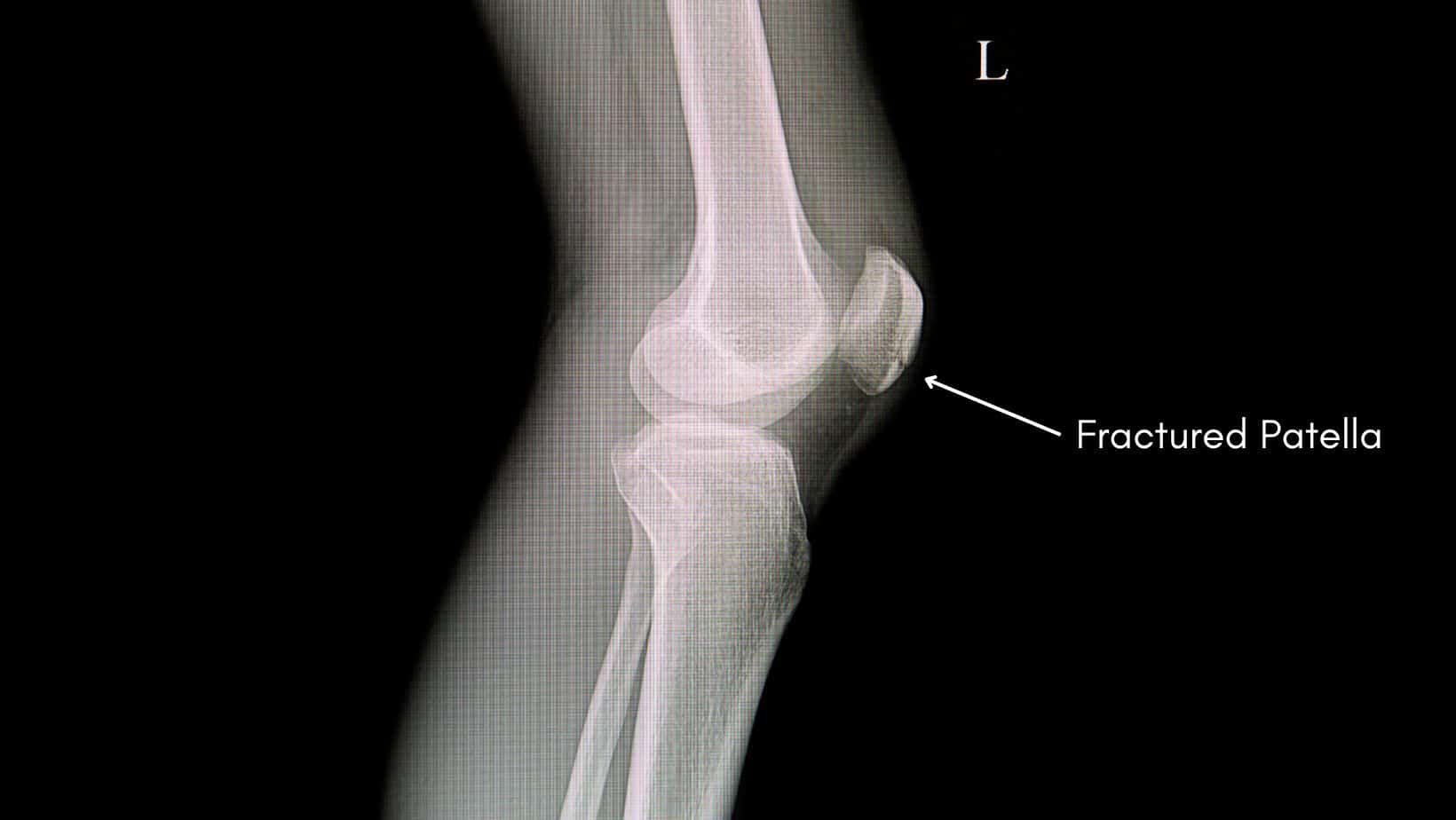Patella Alta
Read More >
Patella fractures account for approximately 1% of all fractured bones. This injury is typically related to a fall with a direct impact on the knee and is also seen with road traffic incidence when there has been a direct impact of the knee on the dashboard. Less commonly the force of the quadriceps contraction or a rupture of the quadriceps tendon can cause a fracture of the patella.
Read about other injuries of the patella in our related articles: Patellofemoral Arthritis, Patella Tendonitis, Patellofemoral Pain Syndrome, and Chondromalacia Patella.
Historically patella fractures have been classified as transverse (the most common), vertical (the least common), comminuted, marginal, or osteochondral. With each also being either with or without deviation. Treatment is based on the type and complexity of the fracture, as well as the degree of soft tissue injury, and should take into account how knee extension has been affected, the conformity articular surface of the patella on the femur and the patient’s compliance.

The Association for the Study of Internal Fixation suggests a new classification for patella fractures relating to a classification system used for long bone fractures (Gwinner et al 2016):
A1) Avulsion
A2) Isolated Body
B1) Vertical Lateral
B2) Vertical Medial
C1) Transverse
C2) Transverse plus second fragment
C3) Complex

Occurring only when the skeleton is immature, this type of fracture occurs most often between 8-16 years of age and is more common in boys. This is an unusual fracture, accounting for less than 1% of fractures in this age group. This fracture has a sudden onset, from a forceful contraction of the quadriceps, usually from a jump or running. The cartilage that surrounds the patella separates from the more solid bone, in almost all cases from the lower pole of the patella. These are treated with the casting of the leg if there is continuity of the quadriceps and if the fracture is non-displaced.
The specific protocol for treatment and rehabilitation of a patella fracture will depend on the type of fracture, as well as the health, strength and fitness of the individual. Many patella fractures are treated conservatively with a period of time of joint immobilisation with a brace or case. Some cases will need surgery, and there are several different surgical techniques that can be used.
Once the fracture is stable, either through natural healing or surgical procedure, physical therapy can be increased to start to rebuild the strength of the muscles surrounding the knee. In particular the quadriceps muscle will have lost a lot of strength and bulk due to the immoblisation of the knee, and as the patella sits in the quadriceps tendon it needs to be completely rested until the patella is stable. A rehabilitation plan would be drawn up with your consultant and physical therapist that is specific to your case and needs.
Read about the Best Exercises for Fractured Patella in our related article.
Each case is individual, as you can see from the classifications, there is a wide range of fractures. Recovery typically takes 3-6 months, but it can take longer. As the patella is not a weight bearing bone it takes a lot longer to heal than other bones. During this period of recovery you will need to stick to the advice that your doctor or physical therapist has given you in term of activity modification. As some movements and positions may increase the healing time by putting more stress on the healing bone.
Returning to walking after a patella fracture can feel like a daunting task. It will be broken into manageable stages, with exercises working on the specific component of walking. Balance, strength, flexibility and coordination are a few of the elements that will need to be improved in order to walk well.
Often your walking will be with crutches for a significant period of time, and it is often better to walk with good technique with some assistance from crutches thsn to limp or walk with poor technique without.

This is not medical advice. We recommend a consultation with a medical professional such as James McCormack. He offers Online Physiotherapy Appointments.
Related Articles:
Fractured Patella Knee Brace
Best Exercises for Fractured Patella